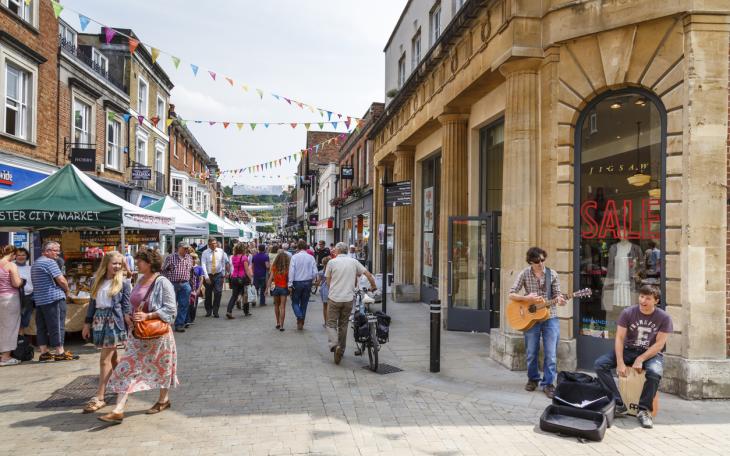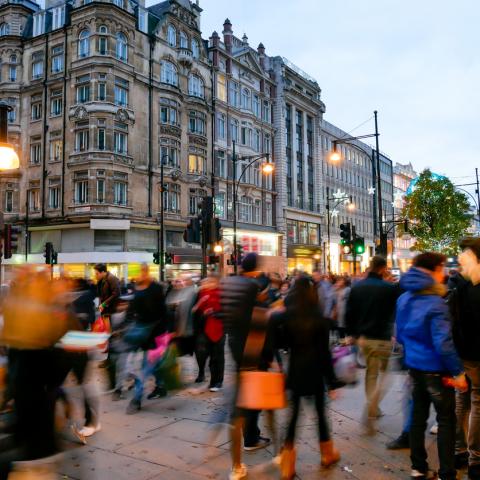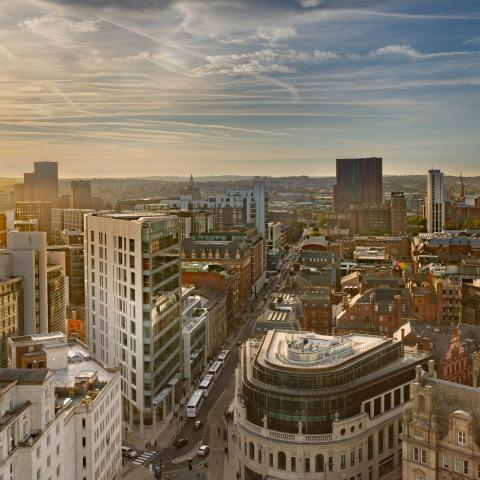Fifteen-minute politics

Over last weekend, Oxford city centre was the site of a large protest which resulted in five arrests according to Thames Valley Police. Balliol and Exeter colleges and the Bodleian Library formed the backdrop for an estimated 2,000 marchers, with celebrity protestors Laurence Fox and Piers Corbyn in attendance.
The cause? Ostensibly the city council’s Low Traffic Neighbourhoods (areas of roads closed to through-traffic) policy and the “15-minute city” zones proposed as part of its Local Plan 2040. In essence, this is the idea that everything you need for life should be within a 15-minute walk, harking back to a way of life before the out-of-town retail park (in this case the reduced attractiveness of driving won’t matter). However, leaflets handed out at the march suggest other more fringe political elements are involved in the protests, which will hardly help the anti-LTN case.
It’s not clear that Oxford is the best example for this debate. It’s a small city centre – an extended university campus – and has not been an easily driveable place for at least a decade. The arguments for and against are complex enough to be beyond this article and the broad brush of media coverage rarely helps matters. Former Hackney Planning Committee Chair Vincent Stops often offers sensible countervailing points to the main wisdom in a borough so pleased with the LTN results that it now wants them covering 75 per cent of its roads.
The lie of the political land is an important deciding factor. While Labour in Oxford and many inner London boroughs is an enthusiastic adopter of driving restrictions (prompted by growing Green Party opposition in traditionally uncompetitive authorities), Labour now in power in suburban Barnet has no plans for the same or to relentlessly bear down on parking at stations and new homes. As we said before the May 2022 election, they know on what side their bread is buttered. Each political group must make its own political calculus before embarking on undoubtedly divisive and high-profile policies, and this will create notable geographical policy differences within parties.
In the long term, these issues bring up wider questions for politics and city planning. On the process side, what are the boundaries of local and regional power? Earlier this month the Department for Transport put a stop to Wandsworth Council’s trial of issuing fines on its 20mph roads – the DVLA was ordered to stop sharing the details of drivers. On the other hand, Boris Johnson recently announced his support for Lord Moylan’s proposed amendment to the Levelling Up Bill to allow councils to ignore London Mayor Sadiq Khan’s extended Ultra Low Emissions Zone.
City structures come in waves. Post-war, families fled the inner city, and the car became king. Resurgence came with the creatives, the “shock-troops of gentrification.” By now the inner London boroughs look completely different through development and churn, and the parks are full of settled young families. For these homeowners, LTNs et al work very well.
So, in its modern incarnation, the 15-minute walking city may suit some in some areas. No one could argue against mixed-use neighbourhoods well-provided with shops and amenities. One suspects that in many other areas, we are not quite there yet. So good luck to councils seeking to deliver this before any punitive/persuasive measures come in. But as inner-city schools (good ones included) struggle to survive falling class rolls – downsizing and merging to do so – the more political question is whether we are simply running into a bifurcated society, as if a continuance of the fissures of Brexit. Has that worked well so far?










